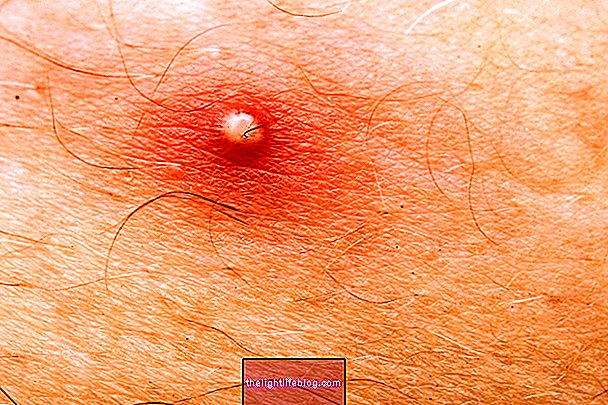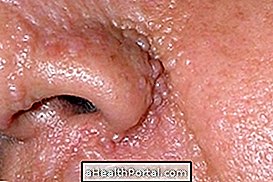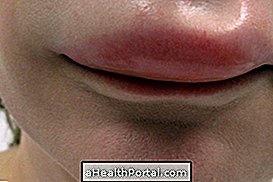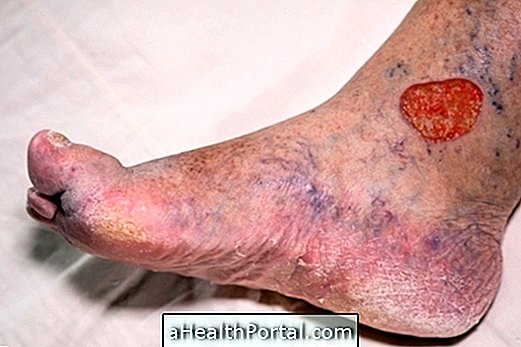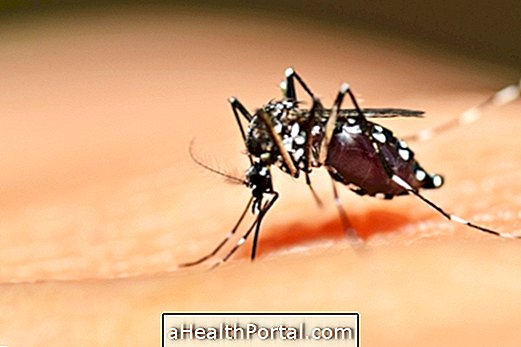The main remedies prescribed to treat mycosis of the skin, nails, scalp, feet and groin include antifungals in ointments, creams, lotions and sprays, although in some cases it is necessary to use tablets. There are several options, and some of the most commonly used include Terbinafine, Fluconazole, Clotrimazole, Miconazole or Itraconazole, for example.
The treatment is guided by the doctor according to the type of mycosis and the severity of the lesions formed, and usually lasts about 1 to 4 weeks, however, it can last for months in cases of scalp ringworm or nails for example.
The most common mycoses that affect people are known as had, mycosis of nails, chilblains, candidiasis, white cloth and mycosis of groin, for example, and all are caused by fungi that live in the environment and can cause lesions in the skin when they manage to dribble the protection barriers of the organism. Learn about the major types of skin ringworm and how to identify it.

1. Skin rash
Mycoses of the skin, whether of the groin, candidiasis, white cloth, cold or impinge, which are the most known, are treated with topical antifungal, and some of the main options that can be indicated by doctors are:
- Naftifine (1% cream or gel)
- Terbinafine (1% cream or solution)
- Butenafine (1% cream)
- Clotrimazole (1% cream, solution or lotion)
- Econazole (1% cream)
- Ketoconazole (1% cream, shampoo)
- Miconazole (2% cream, spray, lotion or powder)
- Oxiconazole (1% cream or lotion)
- Sulconazole (1% cream or lotion)
- Ciclopirox (1% cream or lotion)
- Tolnaftate (1% cream, solution or powder).
Usually, the treatment lasts from 1 to 4 weeks. The medication used and the time of treatment are determined by the doctor, according to the type of injury presented by each person.
It is important to pass the medicine about 3 to 4 centimeters beyond the edges of the ringworm and after application it is important to let the skin absorb all the product to then dress or put on it.
In some cases, especially when the lesions are severe or occupy a large area, it may be necessary to use the medicines in the tablet versions, such as Terbinafine 250mg or Fluconazol 150mg, for example. Check out more tips on how to treat ringworm.
2. Ringworm or scalp mycosis
In these cases, the use of ointments is not enough to treat properly, so in addition to the ointments, creams or lotions used in the ringworm of the skin, the doctor will also indicate the use of tablets.
Some indicated tablet options include Terbinafine 250mg, Fluconazole 150mg or Itraconazole 100mg, for example, for about 90 days.
3. Mycosis fungoides
The treatment of mycosis of the nail is the most prolonged, and can last from 6 months to 1 year, especially in cases of mycosis of the toenail, which have a slower growth. The main form of treatment is with the use of enamels and lotions, such as the amorolfine base, which can be applied to the affected nail 1 to 2 times a week.
For effective treatment, especially when nail impairment is more severe, your doctor may recommend tablets such as Fluconazole 150 mg or Itraconazole 100 mg for 6 months to 1 year, depending on the severity of the injury or response to treatment.
Another more convenient option is the laser treatment, called photodynamic therapy, performed in weekly sessions for 1 to 3 months, able to eliminate the fungus and promote nail growth. Learn more about nail fungal treatment.
Home treatment
The use of home remedies may be useful to complement the clinical treatment of ringworm, but these home remedies should not be used exclusively to treat any form of ringworm. Check out some homemade recipes on home-care for ringworm.
In addition, some habits are recommended that can help combat mycosis and facilitate recovery, such as:
- Keep the region clean and dry;
- Avoid wet or damp clothing or shoes;
- Do not share pieces of clothing or shoes;
- Avoid walking barefoot in public places, especially those with higher humidity, such as saunas and restrooms.
In addition, it is necessary to observe if the animals of the house present lesions suggestive of mycosis, since it is possible that they are transmitting fungi, which will cause new infections in the future.
